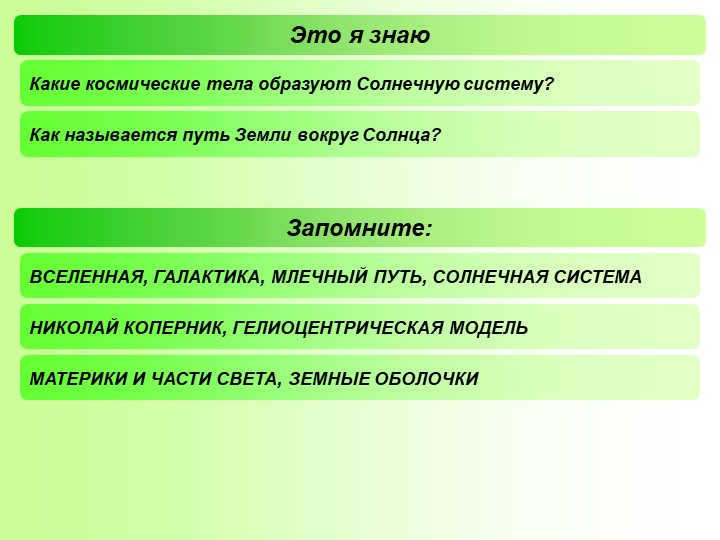Ever since I was a child, I have always had a fascination with everything related to space. Therefore, when my son recently posed a similar question, I paused and took the time to explain in depth the composition of the solar system and its contents.
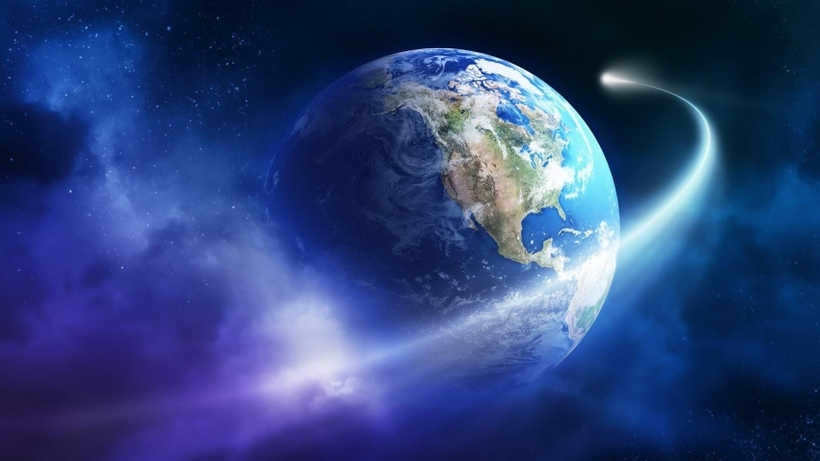
The celestial bodies of the solar system
Aside from the Sun, which is approximately 1.4 million kilometers in diameter, the solar system is home to other celestial bodies, known as planets. After the Sun, these planets are the largest objects that orbit it. Scientists classify the planets into two main groups: the terrestrial group and the giant group. The terrestrial group consists of:

- The size of the Earth is about 12,734 kilometers in diameter;
- Venus has a diameter of approximately 12,203 kilometers;
- Mars measures about 6,870 kilometers in diameter;
- Mercury has a diameter of around 4,877 kilometers.

- Saturn has a diameter of 117364 kilometers;
- Uranus has a diameter of 50624 kilometers;
- Jupiter has a diameter of 139830 kilometers;
- Neptune has a diameter of 49143 kilometers.
- Comets have a diameter of a few kilometers;
- Asteroids have a diameter of 30 meters or more;
- Planetary satellites vary in size, with Jupiter having the largest (Ganymede – 5248 km.) and Mars having the smallest (Deimos – about 10 km.);
- Dwarf planets are also part of the system.
The system originated billions of years ago through a process known as gravitational collapse. Essentially, the mass collapsed, initiating rotation. The central mass heated up and increased acceleration, leading to a flattening that resulted in the formation of planets and a glowing star.
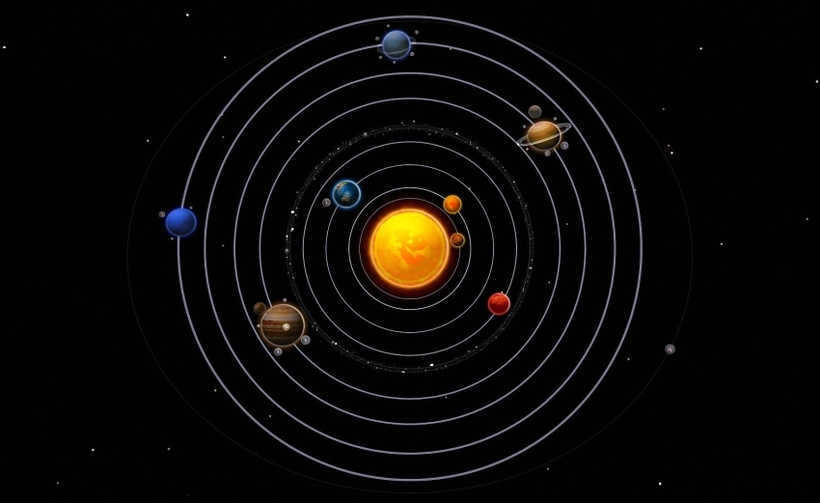
Comets and asteroids
Comets can be compared to “celestial snowballs” composed of dust, fragments of rock, and frozen gases. Typically, they are not larger than an average city and when they approach the sun, the gases and dust begin to heat up and erupt, creating a tail. This tail can extend for a few million kilometers.
Asteroids, on the other hand, are a collection of celestial bodies that are larger than 30 meters. They revolve around the Sun and are characterized by their lack of atmosphere and irregular shapes. It has been observed that some asteroids even have their own satellites. The presence of many asteroids that share orbits with our planet poses a threat to humanity.
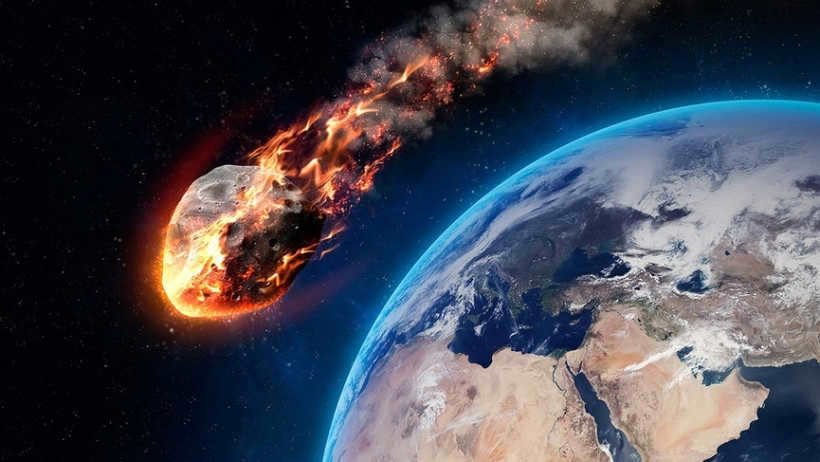
Investigating
Advancements in technology have enabled us to significantly expand our knowledge of the universe. This has been achieved through the deployment of spacecrafts to distant planets. This endeavor began in the mid-20th century, and since then, Earth’s probes have visited every planet at least once. Scientists have obtained valuable data such as images, atmospheric composition, and soil analysis from these missions. Furthermore, humans have successfully landed on the Moon, established a permanent space station in Earth’s orbit, and sent a rover to explore Mars.
Around the Sun, there are eight celestial bodies known as planets that orbit in a circular path called an orbit. Our Earth is one of these planets. Each planet follows the same direction and is almost in the same plane, but they vary in terms of speed and distance from the Sun. The Sun, along with the planets and other cosmic entities like asteroids and comets, make up the Solar System.
Found an error?
If you’ve come across a mistake, inaccuracy, or simply disagree with the answer, please inform us.
Let’s acquaint ourselves with the celestial bodies that make up the Solar System. We will explore them in the order of their proximity to the Sun. First, we will provide a concise summary of the entities within the solar system, and then we will delve into observing the fascinating objects from Earth.
The makeup of the heavenly bodies in the solar system.
Located at the heart of the solar system is a celestial body known as the Sun 🙂
The Sun holds the utmost significance in the solar system as a result of its immense mass, which produces immense gravitational forces. These forces are responsible for maintaining the proximity of all other celestial bodies – planets, asteroids, and comets – to the Sun.
The Sun releases an enormous amount of energy every second, serving as the catalyst for the emergence and sustenance of life on our planet Earth.
The planets in the Earth’s group
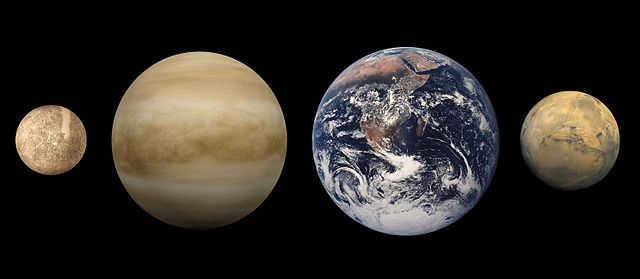
The four planets in the Earth group are the ones closest to the Sun.
Mercury is the closest planet to the Sun, followed by Venus, then Earth, and finally Mars.
There is a wealth of data available on these celestial bodies in the Solar System, so there is no need to provide specific details here.
However, the accompanying image clearly illustrates the relative sizes of the planets in the Earth group.
From left to right, they are Mercury, Venus, Earth, and Mars.
However, if you are looking for a concise overview of the planets in the Earth group, it can be found here:
The Largest Planets in the Solar System
The primary asteroid belt.
Located beyond the orbit of Mars is the Main Asteroid Belt, which consists of various small bodies within the solar system.
Within this region, there are several hundred relatively large rocky fragments and numerous smaller ones, known as asteroids. The largest asteroid in this belt is Ceres, followed by the slightly smaller asteroid Vesta. These two asteroids alone make up over 50% of the overall mass of the asteroid belt.
In fact, the combined mass of the entire Main Belt is only 4% of the mass of the Moon, which is relatively small.
However, these asteroids hold great potential for future colonization of the solar system. Due to their low gravity, spacecraft can easily take off and land on them. Additionally, asteroids can serve as a convenient source of minerals, as they are already present in interplanetary space and do not require extraction from planets.
The Solar System’s Largest Bodies: Giant Planets
Following the Sun, the giant planets are the most substantial entities in the solar system. These include Jupiter, Saturn, Uranus, and Neptune. Positioned beyond the Main Belt, these celestial bodies are classified as gas giants due to their primarily gaseous composition, consisting of ammonia, hydrogen, helium, methane, and other elements. While we have a general understanding of the composition of their atmospheres, the interior makeup of these planets remains largely speculative and subject to calculations.
Remarkably, computer simulations have revealed that giant planets play a crucial role in safeguarding the inner planets of the Earth group from asteroids and comets. If not for these imposing bodies, the likelihood of Earth being struck by asteroids and comets would increase exponentially!
All giant planets have their own moons, and Saturn stands out with the largest number of them – a whopping 62! Some of these moons are even comparable in size to Mercury, not to mention the smaller celestial bodies like minor and dwarf planets.
Let’s delve a little deeper into the giant planets:
Giant planets
The biggest planets in our solar system
Minor Objects in the Solar System
The minor objects in our solar system, such as planetary moons, asteroids, comets, and dwarf planets, are just as fascinating to astronomers as the larger planets and the Sun.
Several asteroids and minor planets follow orbits around the Sun that are similar to those of actual planets. Many of these objects are even comparable in size to Mercury and the Moon.
These small bodies in our solar system provide convenient locations for future human exploration, thanks to their low gravity which makes landing and taking off relatively easy.
Furthermore, some of these asteroids could potentially pose a threat to Earth, so it’s important to keep a close eye on them.
To learn more, check out these resources:
Minor Objects in the Solar System
Small Planets in the Solar System
Observations of celestial bodies in the solar system
There are various methods to observe the celestial bodies in the solar system.
To begin with, one can make naked-eye observations, just like our ancestors did, by referring to astronomical maps. This way, you can observe not only the moon but also:
- Familiarize yourself with the major constellations in the sky
- Clearly see Saturn, Jupiter, and Mars
- During sunrise and sunset, you can spot Venus, also known as the “morning star,” near the Sun
- If you’re fortunate, you might even catch a glimpse of Mercury
Overall, it’s not necessary to pursue binoculars with high aperture and magnification. If you require enhanced luminosity and magnification, it would be more sensible to consider using telescopes.
The visibility of celestial objects through a telescope is influenced by two main factors: the quality of the telescope itself and the level of light pollution in the surrounding area.
What is observable through a telescope largely depends on its capabilities and specifications.
Different telescopes offer varying levels of magnification and clarity, allowing for different types of celestial objects to be observed.
When selecting a telescope, it is important to consider what specific objects or phenomena you are interested in observing, as well as the level of portability and ease of use that you require.
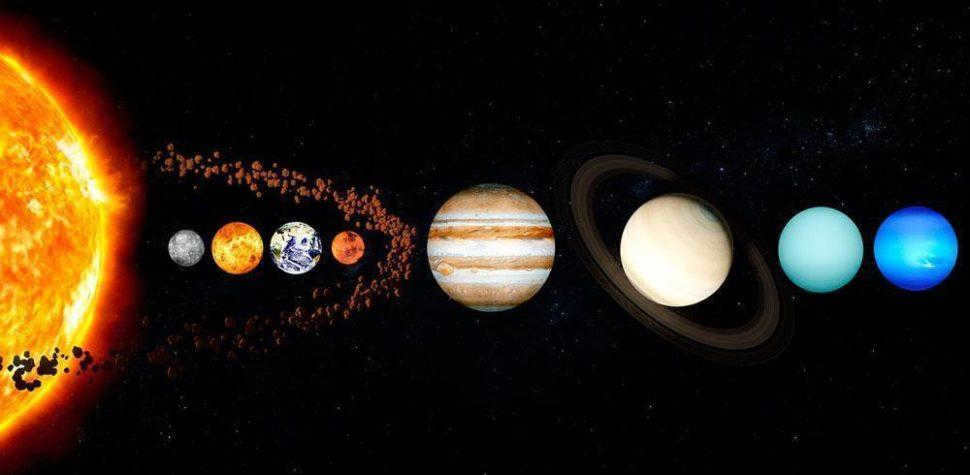
The solar system is comprised of various celestial bodies, many of which remain undiscovered by astronomers. However, there are certain bodies that serve as the foundation of our planetary system.
The central focus of the solar system is a solitary star known as the Sun. This star constitutes over 99.86% of the entire matter within the solar system. Orbiting around the Sun are numerous space objects, with the largest ones being the planets. Among these, there are four planets belonging to the Earth group:
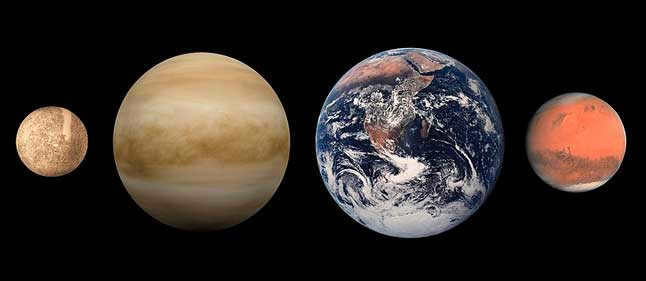
The star’s inner planets are situated in proximity. Meanwhile, the remaining four planets constitute a cluster of immense gas giants:
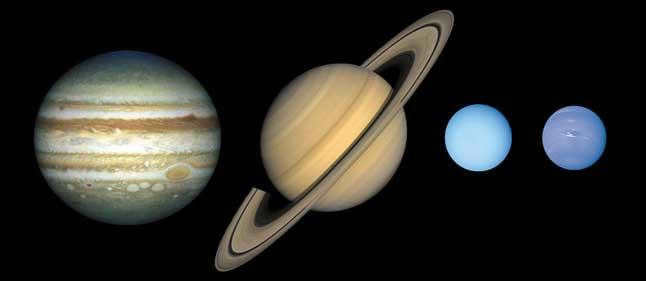

These celestial bodies are positioned at a significantly greater distance from the star. It is possible that there are even more remote planets situated beyond the orbit of Neptune, but current technological advancements do not yet permit us to comprehensively examine the entirety of the solar system.
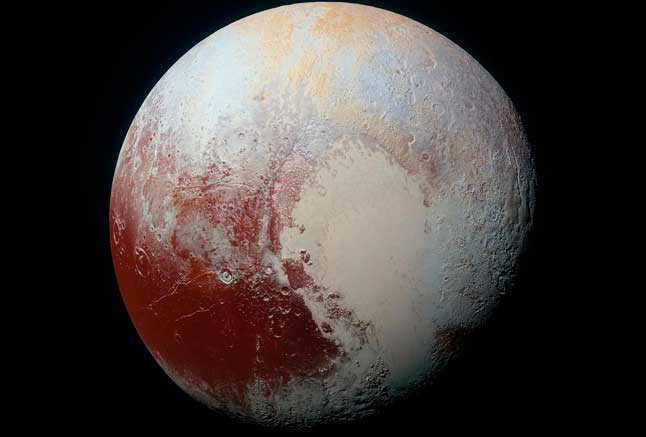
Smaller celestial bodies such as asteroids and comets also orbit the Sun. The main difference between these bodies and planets is their non-spherical shape. Currently, over 700,000 asteroids have been discovered, but the actual number is likely much higher. Many of these asteroids are located in the asteroid belt near Ceres’ orbit, while another large group exists in the Kuiper belt beyond Neptune’s orbit. Even further out, there are objects in the diffuse disk. Lastly, the Oort cloud, whose existence is only theoretical at this point, is believed to be located very far away. Unfortunately, the objects within the Oort cloud remain inaccessible to observation at this time.
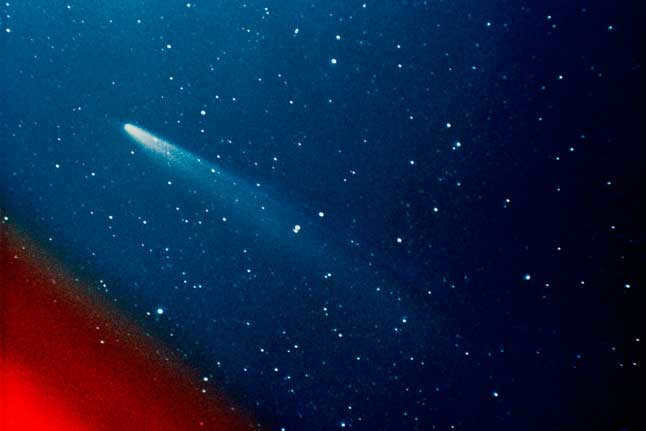
All these celestial bodies orbit the Sun. In addition, the Solar System encompasses natural satellites – objects that revolve around planets (including dwarf planets) and even asteroids. The largest of these, Ganymede, is actually bigger than Mercury. Among these satellites is the Moon.
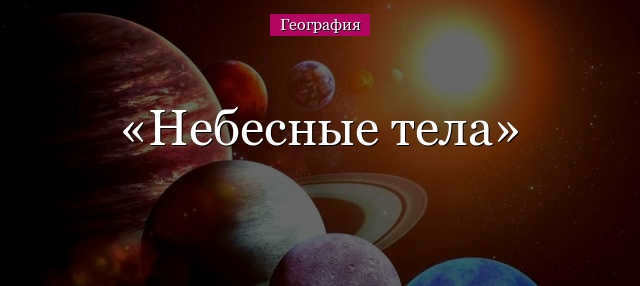
The space surrounding our planet is explored and monitored by satellites, spacecraft, and stations. These technological marvels provide valuable information about the various celestial bodies that make up our solar system. In order to gain a deeper understanding of our cosmic neighborhood, scientists launch spacecraft on missions to explore other planets within the solar system. This comprehensive article delves into the intricacies of our solar system, shedding light on its planets and other fascinating celestial objects.
Cosmic Entities
Within the realm of astronomy, there exist two fundamental concepts – a cosmic entity and an astronomical phenomenon.
A cosmic entity refers to a physical structure or an individual formation held together by gravitational forces, magnetism, or other observable phenomena (such as planets, stars, and comets).
On the other hand, the term “astronomical phenomenon” encompasses a collection of cosmic entities, including galaxies, nebulae, and various other celestial bodies.
When one ventures into the outskirts of civilization on a night devoid of lunar illumination, the Milky Way, a spiral galaxy comprising our very own Solar System, becomes a breathtaking spectacle in the sky.
The Solar System
The Solar System consists of various celestial entities, including both large and small (dwarf) planets, along with minor bodies. All of these bodies orbit around the Sun, which serves as the central star.
Within the Solar System, the large planets can be categorized into two distinct groups. The first group comprises the four planets that are closest to the Sun, known as the Earth group. The second group consists of the next four planets, which are referred to as gas giants.
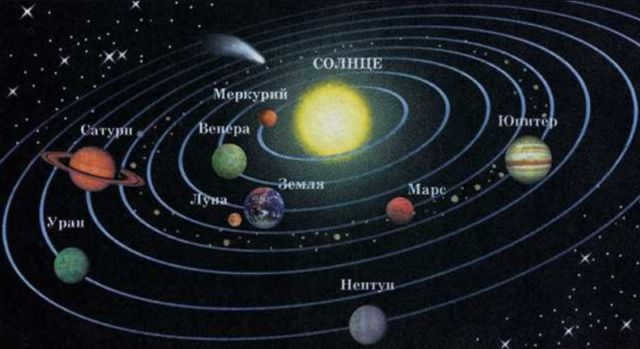
Planets in the Earth group
The Earth group consists of Mercury, Venus, Earth, and Mars, which are the closest to the Sun.
Mercury is the smallest planet with a rotation axis perpendicular to its orbit. The side facing the Sun is heated to temperatures above +400°C, while the opposite side is always below -170°C. It has no atmosphere.
Venus is shrouded in dense clouds of chlorine and sulfur compounds, and its atmosphere is composed of carbon dioxide. It experiences volcanic eruptions and strong winds at temperatures exceeding +450°C.
Earth is the most habitable planet for humans and the only one where liquid water exists.
Mars has a thin atmosphere consisting of carbon dioxide, low pressure, temperatures ranging from -150°C to +20°C, and a rocky surface.
Among the celestial bodies in our solar system, we find the gas giants Jupiter and Saturn, both adorned with their iconic rings. The ice giant Uranus, although it has smaller rings, adds to the mesmerizing beauty of these giants. Finally, we have Neptune, completing this extraordinary group of planets. It is worth noting that Jupiter holds the title of the largest planet in our solar system.
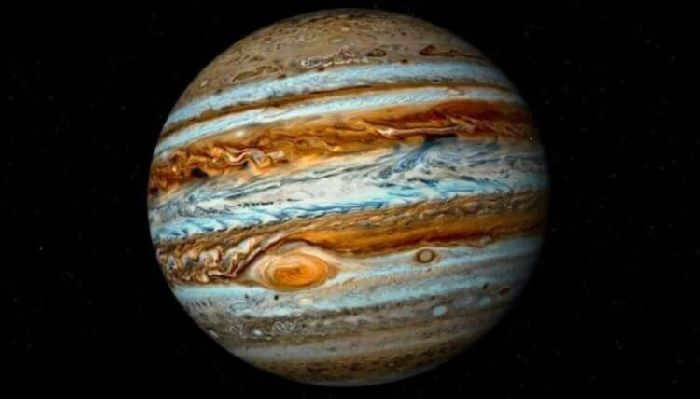
The fastest recorded wind speed near the surface of a planet is found on Neptune, reaching approximately 600 m/sec.
Small celestial bodies
The Solar System is home to various small celestial bodies, including five dwarf planets (with Pluto being the most well-known), satellites, asteroids, and comets.
The number of satellites orbiting each planet differs, with Earth having one and Saturn having the most at 82. Mercury and Venus do not have any satellites.
Located between Mars and Jupiter is an asteroid belt, consisting of a collection of tens of thousands of asteroids larger than 1 km in diameter.
Comets are of small dimensions (measuring a few km) and are composed primarily of ice. When they come close to the Sun, they readily sublimate, giving rise to a distinctive “tail” composed of dust and gases. As such, in the early months of 2007, the solar system traversed the path of comet McNaught, which happened to be the most luminous comet observed in the past four decades.
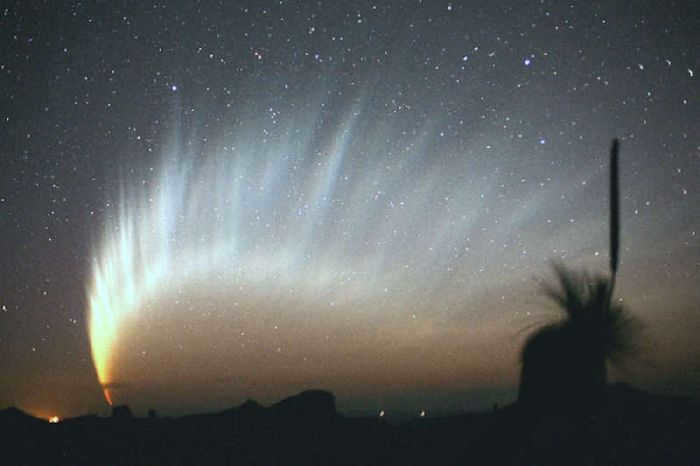
What is the knowledge gained?
We have acquired an understanding of celestial entities and the functioning of the solar system. It appears that apart from the prominent planets, there exists a multitude of minor celestial bodies within the solar system, and each planet varies in the number of its satellites. Astronomers meticulously track and capture images of comets passing through the system, while amateurs also contribute to this visual documentation.
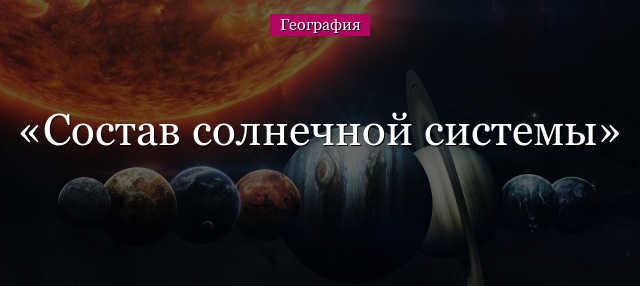
The Universe is the name given to outer space and all that it contains. It is made up of numerous galaxies, one of which is known as the Milky Way. Within the Milky Way, we find our solar system, which consists of the Sun, a highly influential star. Additionally, the solar system comprises various celestial bodies that orbit around the Sun, contributing to a substantial portion of the solar system’s overall mass.
The system is made up of a complex and diverse composition. The planets closest to the Sun belong to the Earth group:
They consist of solid rocks, with metals and silicates forming the foundation.
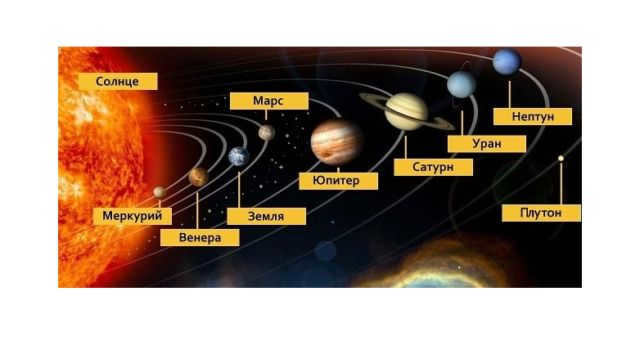
Following are the massive planets:
These planets are characterized by their immense size and mass, which is why they are referred to as giants. These colossal celestial bodies are composed of gases that have solidified at low temperatures.
Some of the cosmic bodies can be observed without the need for specialized equipment or magnifying devices. Venus and Mercury, for example, are visible during the hours before sunrise and after sunset.
The region between Jupiter and Mars is populated by asteroids, creating what is known as the “Asteroid Belt”. These celestial bodies share many similarities with the terrestrial planets in terms of composition.
Within this area, there are notable celestial objects:
- The planet Ceres, which is classified as a dwarf celestial body;
- Pallada, Vesta, Hygeia are examples of asteroids.
Trans-Neptunian space objects are found beyond the orbit of Neptune and are composed of frozen gases and water. One of the most well-known objects in this group is Pluto, which was previously classified as a planet.
The solar system consists of various bodies, including:
- the numerous satellites of the planets;
- Near-Earth asteroids;
- meteorites;
- comets;
- cosmic dust.
These are just a few examples, as there are many more space objects in reality.
Comets are relatively small bodies, typically a few kilometers in size, that follow their own trajectory around the Sun. When a comet is closest to the Sun, the solid gases and ice on its surface transform into a gaseous state, creating the distinctive “comet tail”.
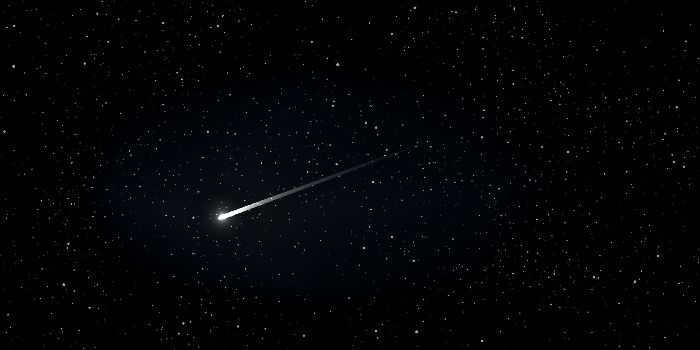
Various Perspectives on the Structure of the Solar System
There are two distinct models that describe the structure of the solar system, and these models are in direct opposition to each other. The geocentric model, developed in ancient times by Claudius Ptolemy, posits that the Earth is positioned at the center of the Universe and remains stationary, while other celestial bodies orbit around it.
The heliocentric model, on the other hand, suggests that the Sun occupies the central position in the Universe, with all other cosmic bodies orbiting around it. Furthermore, all of the planets also rotate on their own axes. This model was proposed by Nicolaus Copernicus.

What did we discover?
The Sun holds the central position in the solar system. The system possesses a complex structure and is a component of a galaxy known as the Milky Way. The Universe consists of numerous galaxies. Students will gain knowledge about the constituents of the Solar System during the 5th grade geography course.
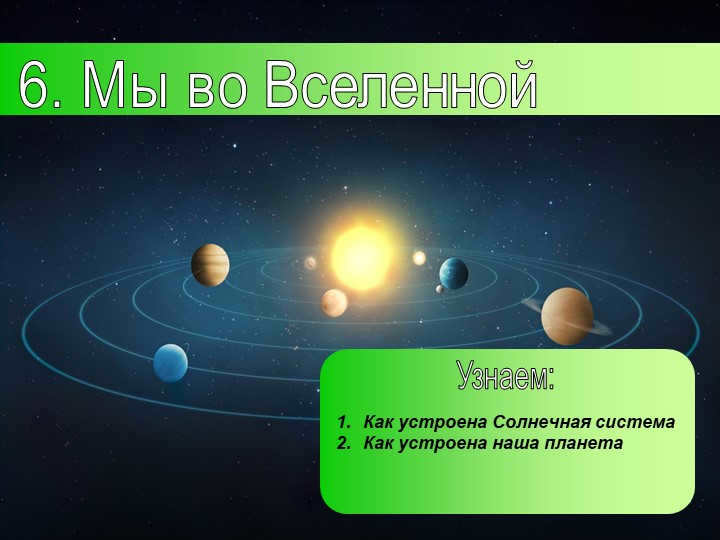
Currently, there are additional cumulative discounts (ranging from 2% to 25%) available to 58,742 educational institutions. To determine the specific discount applicable to all staff members of your educational institution, please log in to your personal Infoworks account.


Advanced training program
Revolutionary methods for teaching geography to children with disabilities.
We are pleased to offer your educational institution an exclusive discount on this course (the discount amount will be determined based on the number of your colleagues who have already completed Infowork courses).
Currently, 58,742 educational institutions are benefiting from additional discounts (ranging from 2% to 25%). To discover the exact discount available to all staff members at your educational institution, simply log in to your personal Infoworks account.
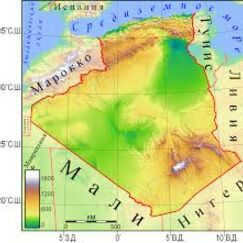
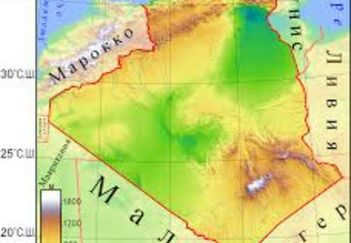
Continuing education program
Specifics of preparing for the All-Russian Comprehensive Assessment in the subject “Geography” under the implementation of the FSES LLC
We have the ability to include your educational institution’s discount in addition to this discount (the amount depends on the number of your colleagues who have completed Infoworks courses)
At present, 58,742 educational institutions are eligible for additional discounts (ranging from 2% to 25%). To find out which discount is applicable to all staff members of your educational institution, please log in to your personal Infoworks account.


Exploring Geography and Utilizing Territorial Strategies in Education
Breakdown of the Presentation by Each Slide:

Slide 2: What is the structure of the solar system?
What defines the universe?
The universe encompasses
the entirety of space and time
along with everything within it,
such as planets,
stars, galaxies, and
all other types
of matter and energy.
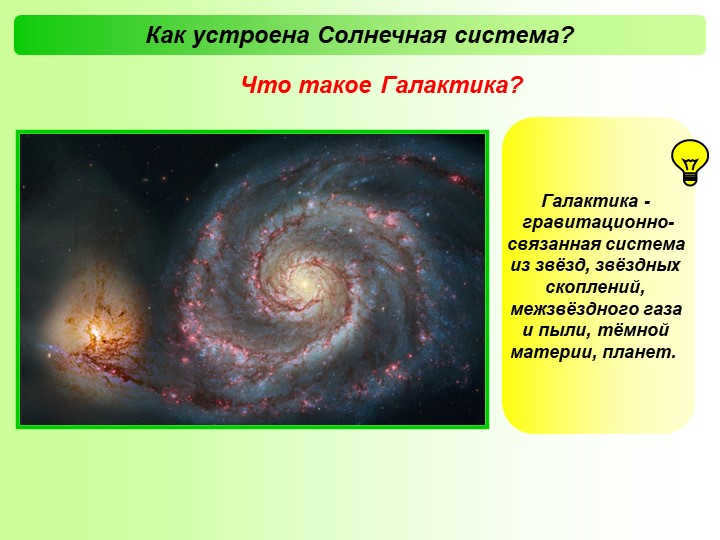
Slide 3: How is the solar system structured?
What constitutes a galaxy?
A galaxy is a system bound together by gravity, consisting of stars, stellar clusters, interstellar gas, dust, and dark matter, as well as planets.
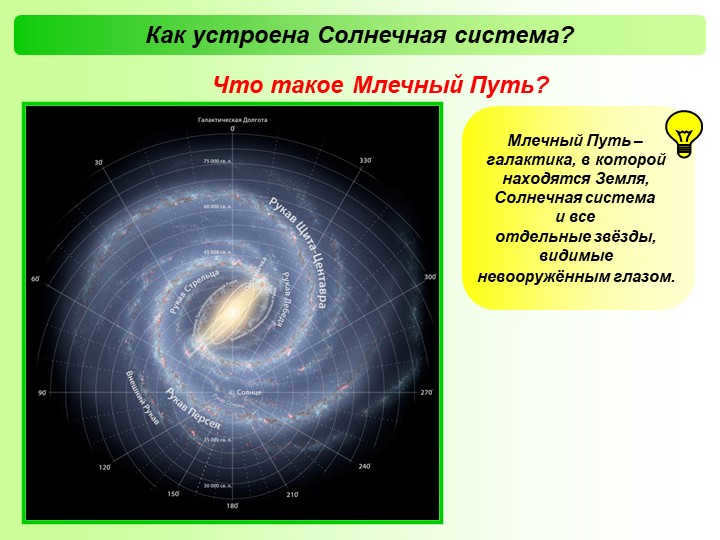
Slide 4: How is our solar system structured?
What exactly is the Milky Way?
The Milky Way is a vast galaxy that houses our Earth, along with our solar system. It is also home to numerous individual stars, many of which can be seen with the naked eye.
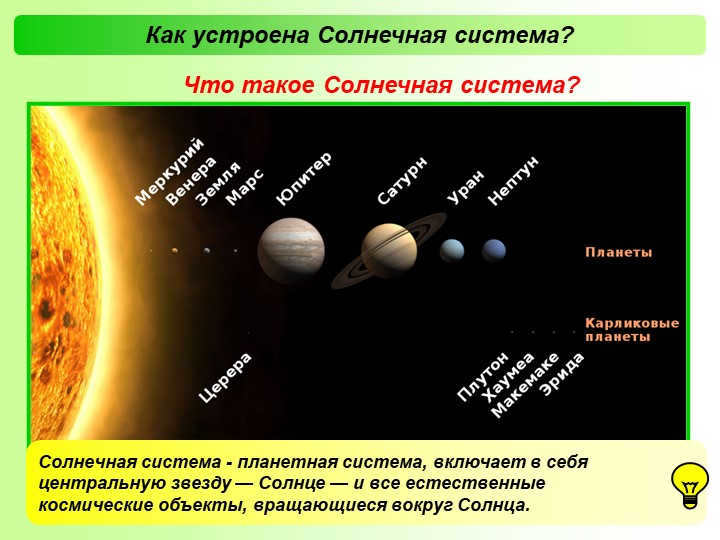

Slide 5: How is the organization of the solar system structured?
What exactly is the solar system?
The solar system consists of a central star, known as the Sun, and all the various celestial bodies that revolve around it in space.
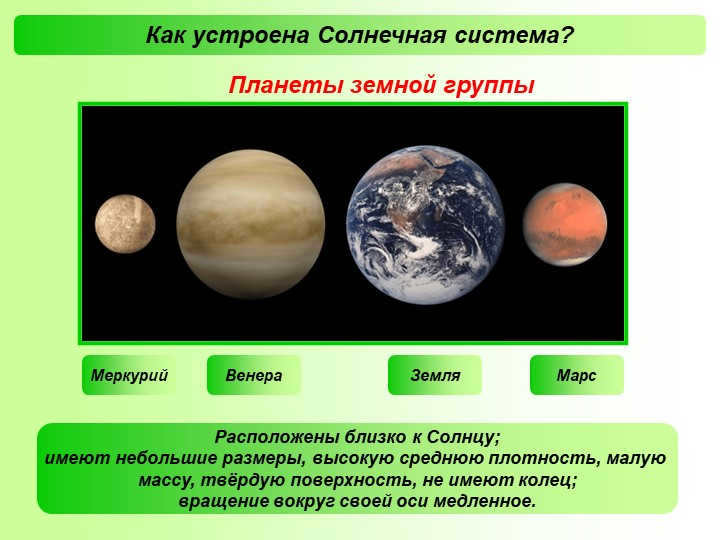

Slide number 6. How is the organization of the solar system structured?
Planets belonging to the Earth Group
are situated in close proximity to the Sun;
exhibit small physical dimensions, high average densities, minimal mass,
solid surfaces, and the absence of any rings;
rotate slowly on their respective axes.
Mercury
Venus
Earth
Mars
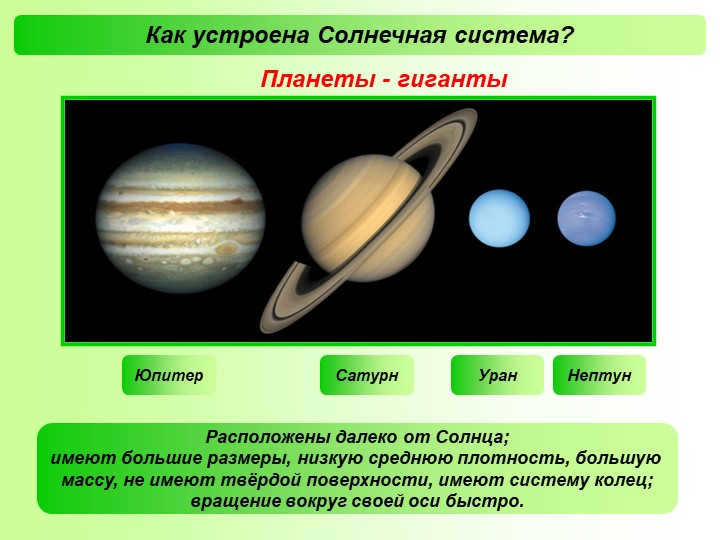

Slide 7: How is the organization of the solar system structured?
The planets are colossal in size
They are positioned at a significant distance from the Sun;
exhibit substantial dimensions, low average density, significant mass, lack a solid surface, and possess a system of rings;
they rotate rapidly on their respective axes.
Jupiter
Saturn
Uranus
Neptune
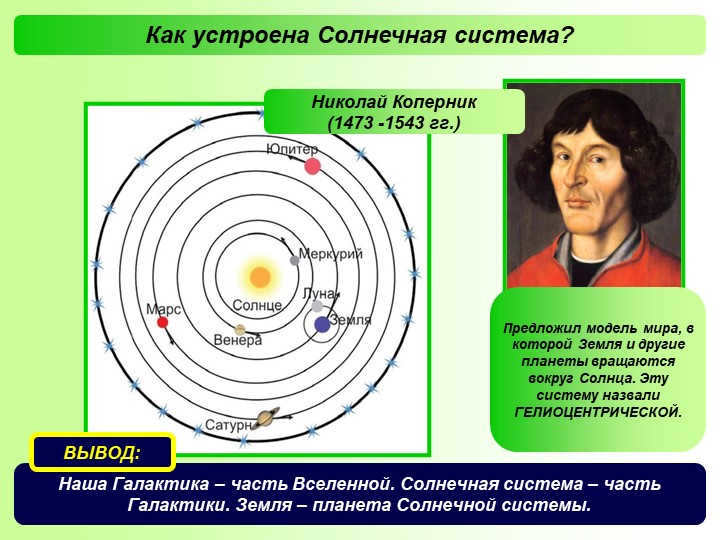
Slide 8 features Nicolaus Copernicus (1473-1543), who is famous for proposing a revolutionary model of the world. According to his theory, the Earth and other planets revolve around the Sun, which is known as the heliocentric model. This groundbreaking idea changed the way we understand the solar system and its organization. It is important to note that our galaxy is just one part of the vast universe, and within our galaxy, the solar system exists. Earth, on which we reside, is one of the planets in this solar system. In conclusion, Copernicus’s heliocentric model has significantly contributed to our understanding of the solar system and its place within the universe.
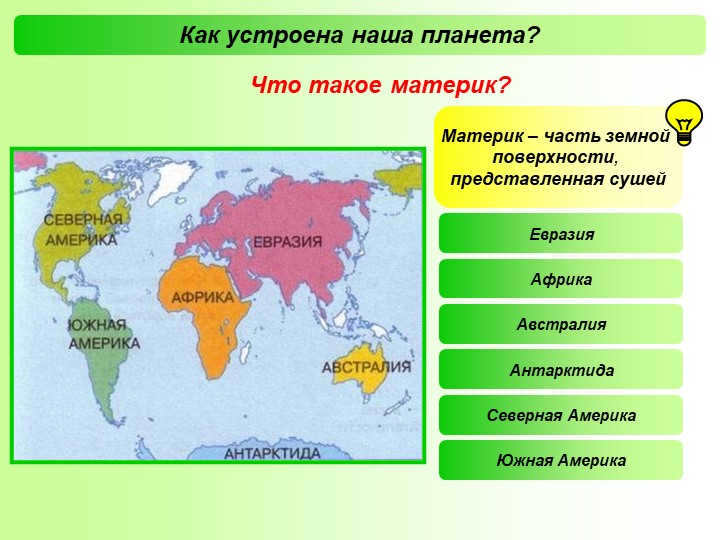

The organization of our planet is a fascinating topic. Let’s explore the concept of continents. A continent can be defined as a specific region on the Earth’s surface, primarily characterized by its landmass. There are several continents that we commonly recognize:
– Africa
– Eurasia
– Antarctica
– Australia
– South America
– North America
Each of these continents contributes to the diversity and uniqueness of our planet. They are vital components of Earth’s geographical makeup.
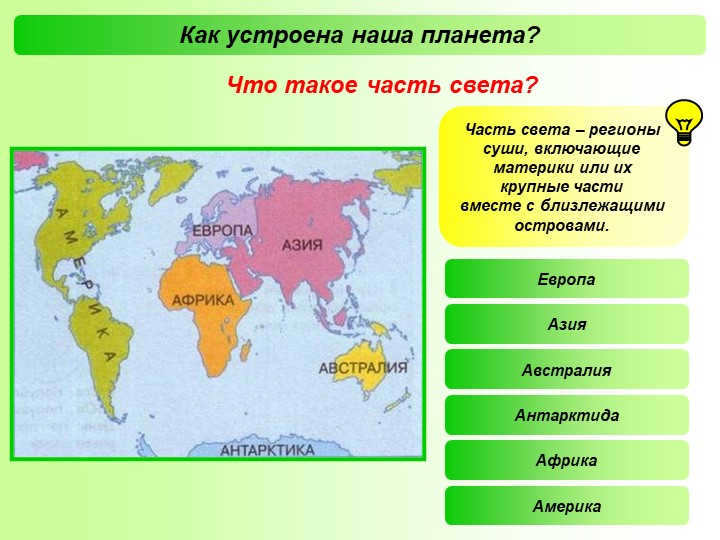

Slide 10: How is our planet structured?
What constitutes a part of the world?
Regions of the world consist of landmasses that encompass continents or their major subdivisions, as well as nearby islands.
The major parts of the world include Asia, Europe, Antarctica, Australia, America, and Africa.
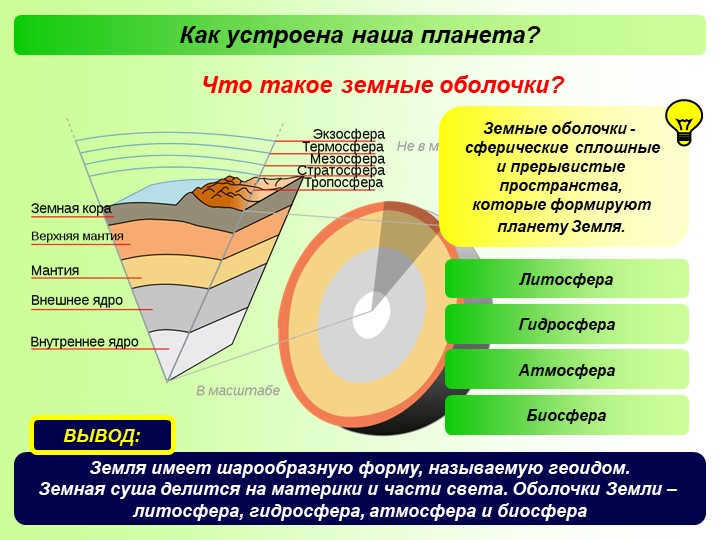

In slide number 11, let’s explore how our planet is structured and the different layers it consists of. These layers, known as the Earth’s shells, are spherical, solid, and discontinuous spaces that make up the planet Earth. The Earth has several shells, including the hydrosphere, lithosphere, biosphere, and atmosphere. Each of these shells plays a crucial role in supporting life on Earth.
The hydrosphere refers to the Earth’s water bodies, including oceans, rivers, lakes, and groundwater. It covers about 71% of the Earth’s surface and is essential for supporting various ecosystems and providing habitats for numerous species.
The lithosphere, on the other hand, refers to the Earth’s solid outer layer, which includes the crust and upper mantle. It is divided into continents and parts of the world and forms the foundation for landmasses and geological features like mountains, valleys, and plate boundaries.
The biosphere encompasses all living organisms on Earth, including plants, animals, and microorganisms. It is interconnected with the other shells and relies on them for resources and environmental conditions necessary for survival.
Lastly, the atmosphere is the layer of gases surrounding the Earth. It protects the planet from harmful radiation, regulates temperature, and enables the circulation of air and weather patterns. It is composed of various gases, including nitrogen, oxygen, carbon dioxide, and trace elements.
In conclusion, our planet is organized into different shells or layers that are vital for supporting life. These include the hydrosphere, lithosphere, biosphere, and atmosphere. Each shell contributes to the overall functioning and dynamics of the Earth, making it a unique and habitable planet in our solar system.
